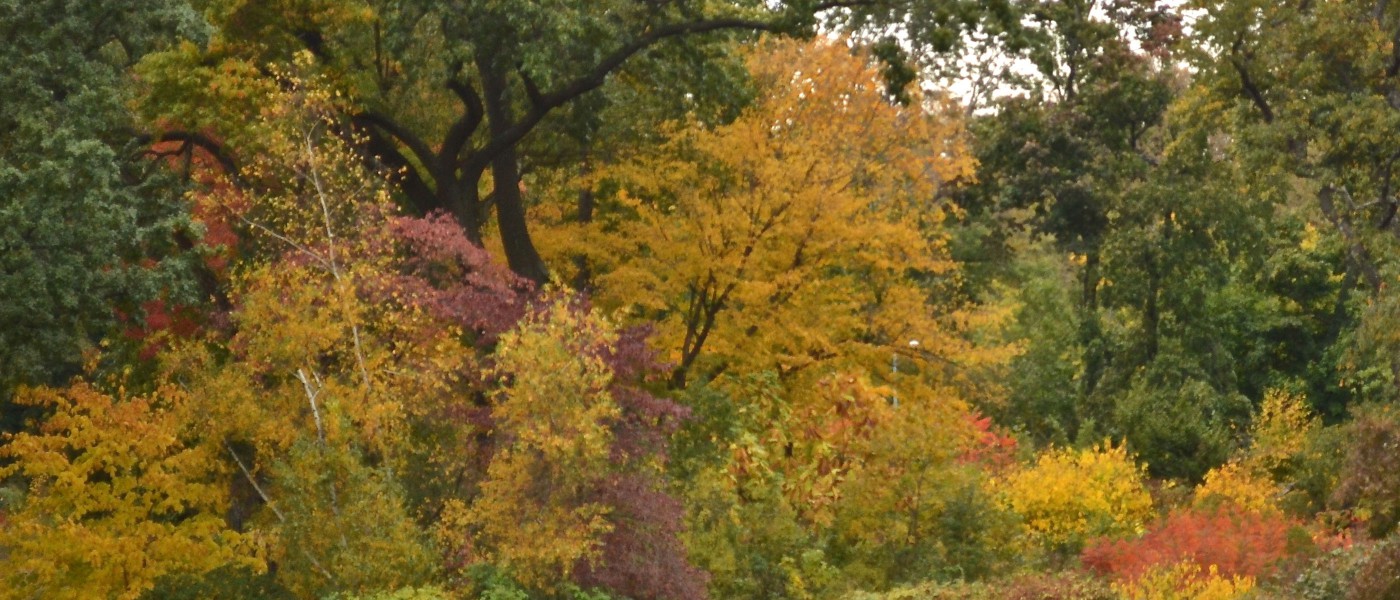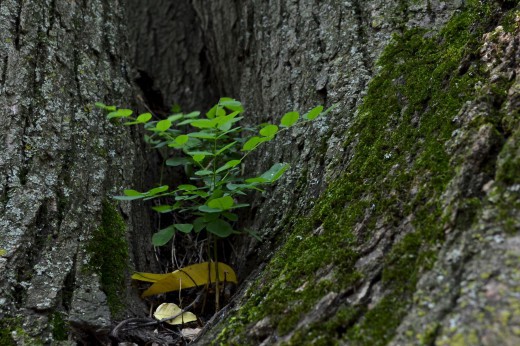Every year, we look forward to the vibrant colors of fall foliage. The green leaves on the deciduous trees on our streets and in our parks transition to beautiful red, yellow, and orange hues, marking the beginning of autumn. We humans can tell what the season is by looking at a calendar. We can look at the environment around us and see seasonal changes. But how do trees know the season? How do trees tell time?
Trees, like humans, are ruled by a circadian clock that gives them an intuitive understanding about what time of day it is. This internal rhythm is largely based on the amounts of light and darkness throughout the day. Since light is essential to the photosynthesis that keeps them alive, trees are very sensitive to changes in the amount of light.
On a day-to-day basis, trees “know” that when there is light, they can continue to make and store the sugars they need in order to function. During the darkness of night, they slow down and rest, using those sugars they made during the day to survive. This system gives them periods of rest and work, just like us.
This same system indicates when the seasons are shifting. Plants are sensitive to the amount of darkness that occurs each day, which is called a photoperiod. Changes in the photoperiod signal what the season is and what the tree needs to do during that time. Essentially, the photoperiod allows them to tell time.
As the season transitions from summer to fall and the days get shorter, trees notice that the amount of darkness each day is increasing. This signals to them that it is time to prepare for winter. Deciduous trees stop producing the chlorophyll that makes their leaves green, leaving just the chemicals that create those bright yellow and orange colors. They stop making new leaves and start saving their energy for their winter dormancy.
When the season shifts from winter to spring, light alone is not enough of a signal for when it is a good time to make new buds and leaves. Even if the light is telling trees that spring is here, cold frosts can happen overnight that wipe out all of the trees’ new growth. A combination of light and temperature cues is more trustworthy, and once there are enough hours of daylight following many very cold days, trees begin to wake up from their dormancy and make new growth.
Climate change is interfering with the fine-tuned systems that trees and other plants have depended on for thousands of years. With more erratic weather patterns, temperature becomes a less reliable cue for trees. Some trees may not break from their dormancy until very late in the season, and others may break too early and die when there is a sudden cold spell. Since trees are important pillars of ecosystems, these threats to their health have a negative effect on many different species.
Next time you go outside, take in the trees around you! They are more than just beautiful plants, they are intelligent beings with interesting adaptations for survival. What are the trees telling you?
This fall: Learn more about how trees tell time at a drop-in Discovery Garden program.


